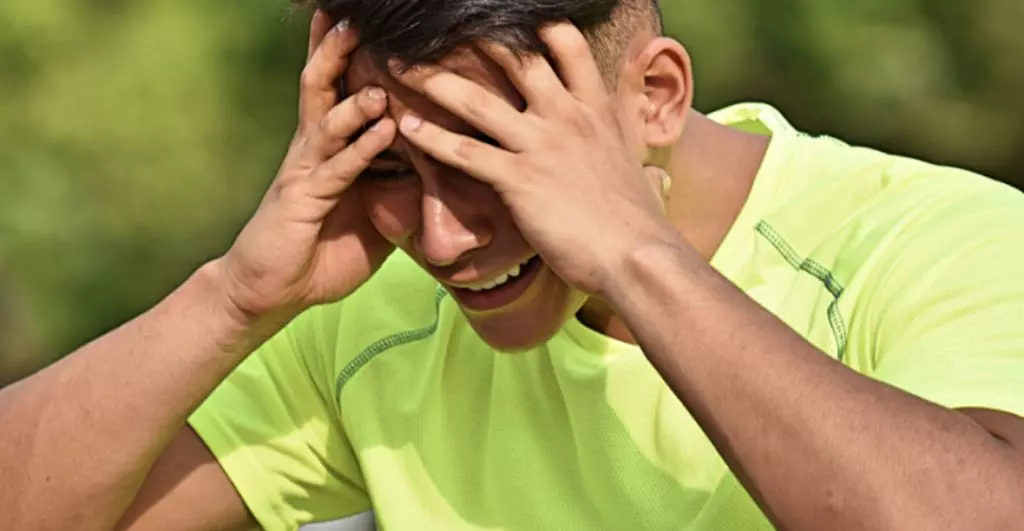Each year 1,000 college students commit suicide, making suicide the second leading cause of death for college students. Add on the additional stressors and responsibilities, and you have a mental health nightmare. If we expect our student-athletes to be able to thrive in both their academic and athletic sectors, we have to provide them with the resources that they need to survive.
Sometimes events unfold that can discourage student-athletes from taking the extra steps of reaching out to professionals to receive treatment. Here are some recent happening with-in the NCAA that caused mental stress on athletes.
On May 14th, 2019 Cincinnati offensive lineman James Hudson released a statement via Twitter saying that the NCAA denied his transfer because he did not go public with issues regarding his mental health sooner.
Hudson's Twitter states, “Clearly mental well being isn't as important as playing time. The stigma is REAL.” Hudson also posted, “the NCAA has denied my waiver specifically because I never spoke up about my mental struggles to the administration at the University of Michigan.”
“Like many football players, I was afraid to speak up about my depression, not wanting to look weak. Now the NCAA is telling me that my courage to step forward and speak about my issues was done too late and subjectively my ‘Circumstances do not warrant relief.'”
Hudson did what many athletes dealing with mental illness fear most. He came forward with his issues. Coming forward can potentially open the floodgates for social media hate, doubt, and stigma from those around you. Hudson's brave act of coming forward about the state of his mental well-being was met with a punishment from the NCAA.
The ripple effect that this controversial situation could have for all student-athletes is insurmountable. Any student-athlete that considers coming forward about their mental health could be discouraged from doing so because of James Hudson's story.
Many athletes have been reacting to James. Nicholas Lewis, a rugby player for the University of Kentucky, shared his thoughts and feelings on the situation saying: “The James Hudson story is disheartening to hear because it has a negative impact on college sports as a whole. Student-athletes have a lot to juggle already and sometimes help is what they need, but with the NCAA doing stuff like that makes it a lot harder to be able to get it.”
In his Twitter statement, Hudson mentions social stigma being one of the main reasons he hesitated to come forward, saying, “like many football players, I was afraid to speak up about my depression and not wanting to look weak.” This is a very telling statement about the various kinds of pressure athletes face when it comes to taking care of their well being.
Regan Mansell, a former rower for the University of Louisville, emphasized the need for balance when asked about the importance of mental health for athletes saying, “maintaining your mental health while playing sports in college mainly requires you to listen to your body. All around going to workouts, classes, and making sure you eat and get enough sleep, you have to do what you feel is right for yourself and your body. Take time for yourself in all things.” Sometimes finding that balance is incredibly difficult and can lead students to feel overwhelmed when it comes to their health.
Back in 2014 University of Pennsylvania runner Madison Holleran and University of Oregon wrestler and football player Kosta Karageorge both committed suicide. The pressure of maintaining academics, performing well in your sport, training, practices, meetings, team gatherings, pressure to perform well, as well as any outside commitments, can quickly become overwhelming. Issues such as body image, depression, and anxiety also have a significant impact on student-athletes.
A 2015 study by the Department of Family medicine found that the group of NCAA athletes that are most likely to commit suicide is male football players. Overall, male athletes are significantly more likely to commit suicide than female athletes. Throughout the nine years that the study was conducted, suicide resulted in 7% of the deaths of collegiate athletes. And while this number may not seem significant at first, 7% is incredibly high for a preventable death. These statistics beg the question, “what can we do to help our student-athletes?”
First and foremost, the long-term goal should be to destigmatize mental illness and start a conversation between families, student-athletes, and universities.
The stories like that of James Hudson are too familiar. Students are being shamed into pushing their mental illness down and are being encouraged to ignore negative feelings in favor of pursuing their athletic careers.
Due to the controversy surrounding the mental well-being of student-athletes, the NCAA has established a mental health task force. The task force is made up of various scientists, clinicians, policy experts, team physicians, administrators, coaches, and student-athletes with a vested interest in the well being of student-athletes.
Together, they developed a 40-page booklet titled “Mental Health Best Practices.” The book emphasizes the role of coaches and trainers in the fight against mental illness. It includes warning signs to spot mental wellness issues early-on as well as pre-screenings for athletes.
The four main areas that the NCAA recommends school athletic departments spend time working on are:
- Identifying certified mental health care professionals for student-athletes.
- Identifying routine and emergency referral practices for students' mental health issues.
- Developing preseason mental health screening questionnaires to help identify potential areas of concern.
- Promoting environments that support mental well-being, resilience and thriving.
The first area is dedicated to finding the right mental health professionals, ones that are specific to athletes. General practitioners located on a school's campus is not the answer. Athletes need a specialized professional that would have to have a deep understanding of what they are going through.
The second aspect of the plan is based upon having a standardized method for when something goes awry with an athletes' mental health. Having a plan in place will help athletes seek out the help they need much more efficient for all parties that are involved.
Point three and four calls for pre-screening of student-athletes mental health. Implementing this change could significantly affect the way coaches and athletic staff interact with players. Being aware of their condition can help coaches be advocates for their players both on and off of the field. This screening could help the school, coaches, team, and even the athletes themselves have a better understanding of how to deal with what they are going through.
The last point made by the task force is that the stigma around getting help has to be dismantled. Players shouldn't feel as if they are being perceived as ‘weak' or ‘needy' for reaching out for help. Athletes should be encouraged to reach out to professionals. Another important note is that team members should be encouraged to help their teammates, and they should direct their teammate to the proper resources.
With this newfound effort the NCAA hopes to be at the forefront of a revolution for mental health in the sports world, but with the case of James Hudson, it shows that there is still a long way left to go. Student-athletes are leaders both on and off the field, so to change the way mental health is treated on college campuses we have to start with those who have the position and the platform to help make the most significant change.
http://www.ncaa.org/sport-science-institute/mental-health-educational-resources
* Originally published on July 11, 2019, by Jacob Lewis







